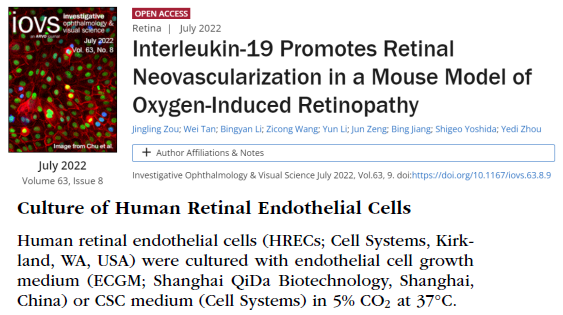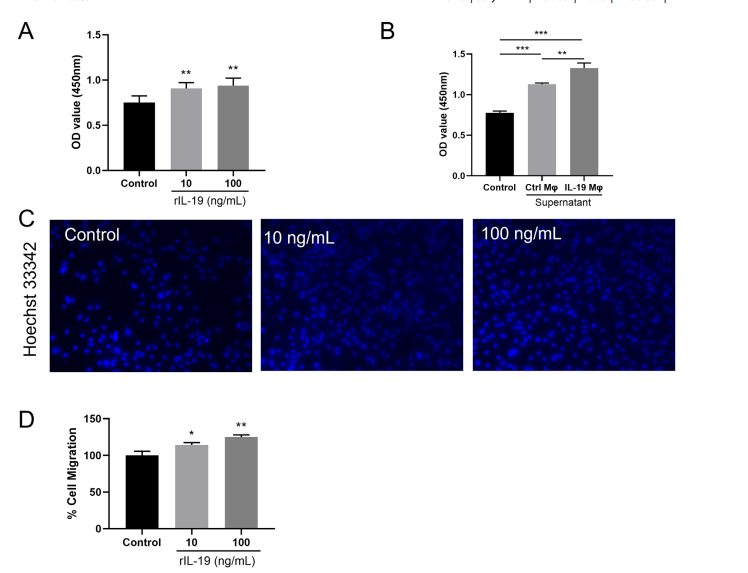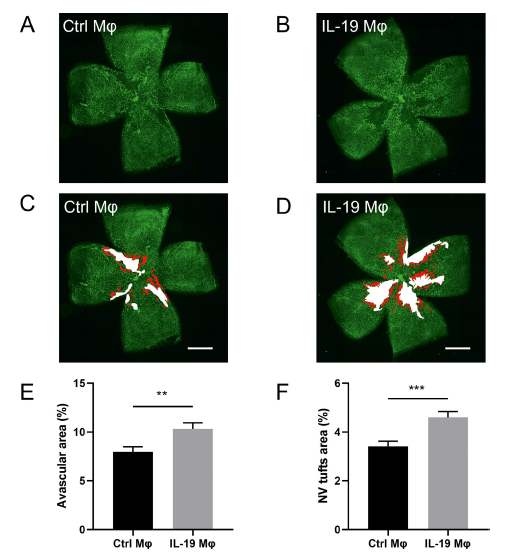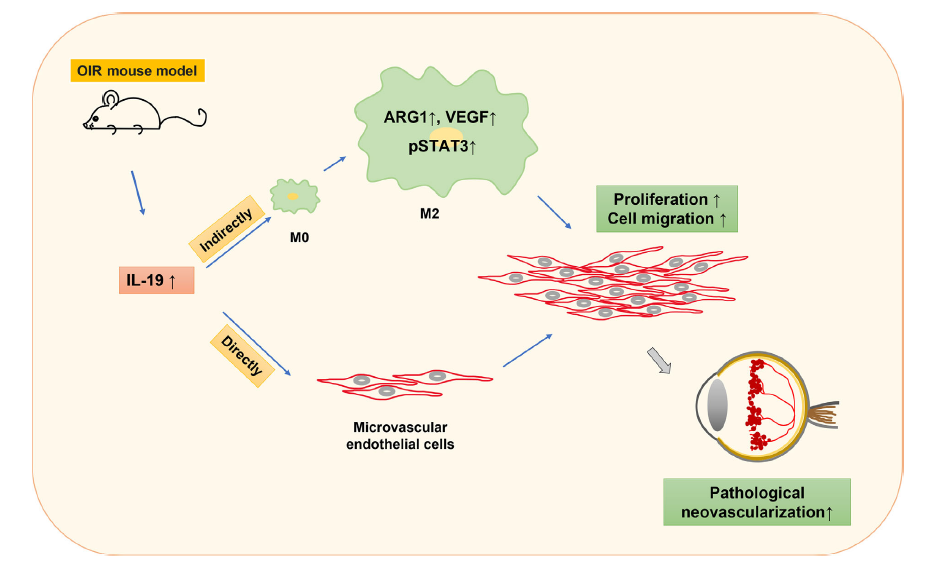Technical Support技术支持
CONTACT US
 400 179 0116
400 179 0116
24-hour service hotline marketing@ldraft.comE-mail
marketing@ldraft.comE-mail
International renowned ophthalmic journal IOVS: Interleukin-19 promotes retinal neovascularization and oxygen induced retinopathy in a mouse model (one of the references in ECGM culture medium)
source:QiDa technoligy views:1372 time:2023-08-03
A customer asked, is there a reference for our culture medium? At the request of the client, the company selected Professor Zhou Yidi, the first author of whom is Dr. Zou Jingling, as a graduate student. The literature published in the internationally renowned ophthalmic journal IOVS on July 11, 2022 was used for reference. The experimental cells were human retinal endothelial cells from cell systems, and the cell culture medium was Shanghai Qida Biotechnology Co., Ltd.'s endothelial cell culture medium ECGM (Qida Biotechnology: P1001).

Diseases caused by retinal neovascularization are an important cause of global visual impairment. Hypoxia is the main cause of retinal neovascularization and leads to changes in the secretion levels of various cytokines. Recently, the ophthalmic research team of the Second Xiangya Hospital of Central South University published a paper in the journal IOVS to clarify the role and mechanism of interleukin (IL) -19 in retinal neovascularization through the model of oxygen induced retinopathy (OIR) in mice.

IL-19 directly and indirectly promotes the proliferation and migration of HREC.
(A) Compared with cells without rIL-19 or at 10ng/mL, 100 ng/mL rIL-19 significantly increased the optical density (OD) value of HREC for 24 hours (n=6 in each group).
(B) The treatment of macrophage supernatant with or without rIL-19 for 24 hours significantly increased the OD value compared to control cells. The supernatant of macrophages induced by rIL-19 significantly increased the value of HREC in OD compared to the supernatant without rIL-19 treatment (n=6 in each group).
(C) Cell migration of HREC was detected after treatment with 10ng/mL rIL-19 and 100ng/mL rL-19 or without rIL-19 (n=4 in each group). (D) When treated with 10ng/mL and compared with the group without rIL-19 treatment, 100ng/mL rIL-19 showed significantly increased Cell migration (n=4 in each group).
*P<0.05, * * P<0.01, * * * P<0.001. The error bar displays the average value ± SEM.

IL-19 stimulated macrophages enhance neovascularization in the retina of OIR mice.
A typical photo of the overall installation of the retina shows control macrophages (A, C) injected into the vitreous cavity from bone marrow and BMDM (B, D) stimulated by rIL-19. In the retina stimulated by IL-19, the avascular area (E) and neovascular clusters (F) significantly increased compared to control macrophages * * P<0.01 * * * P<0.001.
The error bar displays the average value ± SEM (n=14 for each group). Scale: 800 μ M.

Schematic diagram of the mechanism of IL-19 promoting angiogenesis proposed in the OIR mouse model.
IL-19 directly and indirectly promotes pathological neovascularization in OIR mouse models. IL-19 directly promotes cell proliferation and migration of microvascular endothelial cells in the retina, and indirectly promotes macrophage M2 polarization. The mechanism by which the coordination of the two causes pathological neovascularization in the OIR mouse model.
Summary: IL-19 is a Th2 cytokine that plays an important role in angiogenesis and immune regulation in various physiological and pathological processes. This study revealed the role and potential mechanism of IL-19 in retinal neovascular diseases through in vivo and in vitro experiments. IL-19 plays a crucial role in regulating pathological neovascularization of the retina by promoting macrophage M2 polarization and directly promoting angiogenesis on microvascular endothelial cells. This study provides new targets and ideas for immunotherapy of retinal neovascular diseases.







